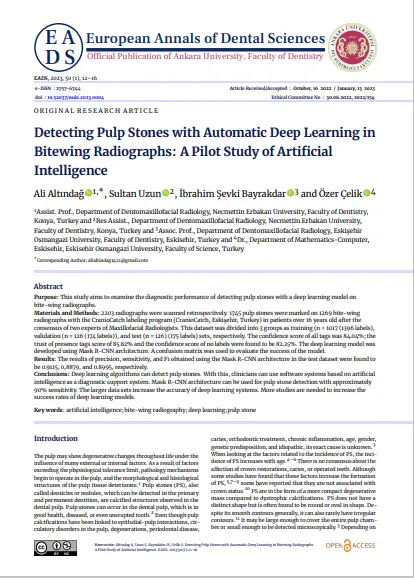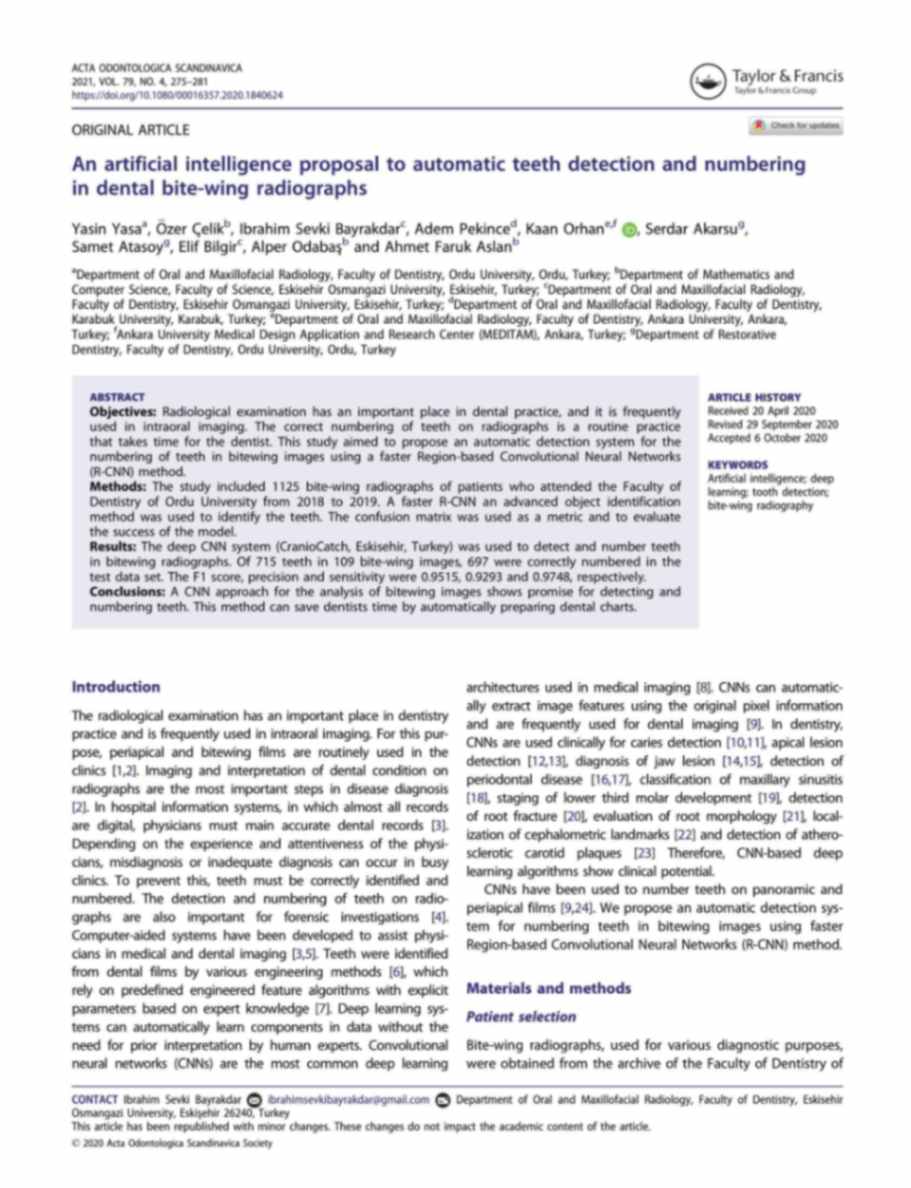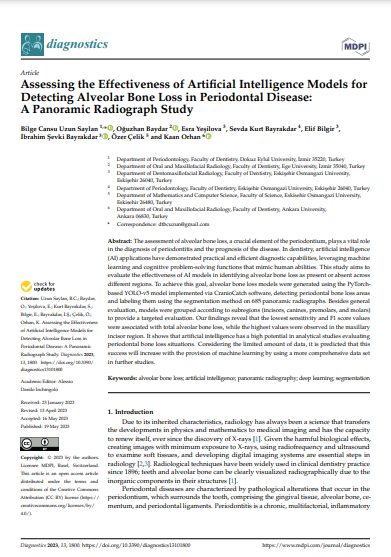Second Mesiobuccal Canal Segmentation With Yolov5 Architecture Using Cone Beam Computed Tomography Images
Introduction
The study aimed to detect second mesiobuccal (MB2) canals in maxillary molars using a deep-learning model based on the You Only Look Once v5 (YOLOv5x) architecture. MB2 canals are crucial in endodontic treatment success, but their detection can be challenging.
Materials and Methods
- 922 axial sections from CBCT images of 153 patients were used.
- MB2 canals were manually labeled using polygonal techniques.
- Preprocessing steps included image resizing and enhancement techniques.
- Training utilized a NVIDIA V100 GPU with 16 GB VRAM and 5120 CUDA Cores.
Results
- The deep-learning model achieved a sensitivity of 0.92, precision of 0.83, and F1 score of 0.87 for MB2 canal segmentation.
- The area under the curve (AUC) in the ROC graph was 0.84.
- The mean average precision (mAP) value at 0.5 IoU was 0.88, indicating high accuracy in MB2 canal detection.
Discussion
- The study demonstrates the potential of AI models in improving endodontic treatment outcomes by identifying root canal variations like MB2 canals.
- YOLOv5 architecture showed promise in efficiently detecting intricate dental structures, enhancing treatment success and saving clinicians' time.
Conclusion
- The deep-learning algorithm successfully detected MB2 canals in maxillary molars, offering a reliable and speedy method for clinicians.
- Utilizing AI in CBCT images allows for three-dimensional examination of canals, enhancing diagnostic capabilities in endodontics.
I Want to Write a Scientific Research Project
CranioCatch is a global leader in dental medical technology that improves oral care in the field of dentistry. With AI-supported clinical, educational, and labeling solutions, we provide significant improvements in the diagnosis and treatment of dental diseases using contemporary approaches in advanced machine learning technology.
CranioCatch serves thousands of patients with dental health issues worldwide every day with its innovative technologies. That’s why we eagerly look forward to meeting our valued dentists who wish to work in the field of 'Scientific Research in Dentistry'.



 Contact Us
Contact Us

